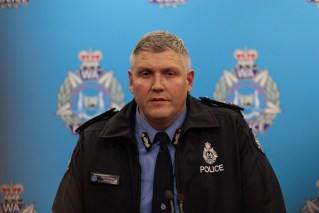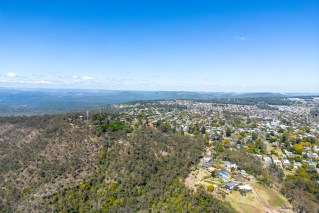The World Health Organisation (WHO) has convened an emergency meeting on the monkeypox outbreak as more than 100 cases were detected outside Africa, including in Australia.
The WHO confirmed the viral infection, which presents similar to eradicated smallpox, had been found in 11 countries that don’t normally have it.
Monkeypox occurs primarily in tropical rainforest areas of Central and West Africa and rarely spreads outside the continent so this fresh spate has triggered concern.
Reuters reports the WHO meeting involved the Strategic and Technical Advisory Group on Infectious Hazards with Pandemic and Epidemic Potential (STAG-IH), which advises on infections that could pose a threat to global health.
It comes as Britain recorded another 11 cases, taking its total to date to 20, as Australia’s first two cases were confirmed on Friday in returned travellers.
Earlier, 14 new cases of monkeypox were reported in Spain, bringing that country’s total to 21.
Other cases have been detected elsewhere in Europe and the US.
WHO, Member States, and partners are working to understand more about the #monkeypox outbreak & how the virus spreads so that we can stop it.
▶️ Keep following us for updates https://t.co/oVThPVuZUe— World Health Organization (WHO) (@WHO) May 20, 2022
Monkeypox in Australia
On Friday, NSW and Victorian health authorities identified two cases of monkeypox in travellers recently returned from Europe.
In Victoria, a man in his 30s diagnosed with monkeypox after flying home from the UK is isolating away from the community, with contact tracing underway.
NSW Health also announced it has identified a “probable” case of monkeypox in a traveller in his 40s who recently returned from Europe.
Confirmatory testing is underway while the man and a household contact isolate at home.
The disease has been spreading throughout Europe and North America in recent weeks, and Australian National University Department of Immunology and Infectious Diseases head David Tscharke said it was “almost inevitable” Australia was going to see cases.
What is monkeypox?
Monkeypox is a rare viral infection caused by the monkeypox virus, an animal virus that occasionally infects humans.
It’s usually found in tropical rainforest areas of Central and West Africa.
A respiratory virus, patients typically suffer:
- Fever
- Swollen lymph nodes
- Rash
- Chills
- Muscle aches
- Backache
- Exhaustion
A rash, or what the World Health Organisation (WHO) calls a “skin eruption”, usually begins within one-to-three days of fever.
It tends to be concentrated on the face, palms of the hands, soles of feet and skin inside the mouth. Genitalia and eyes can also suffer from a rash.
The rash progresses from macules (lesions with a flat base) to papules (slightly raised firm lesions), vesicles (lesions filled with clear fluid), pustules (lesions filled with yellowish fluid), and crusts which dry up and fall off.

Evolution of a monkeypox rash. Photo: AAP
This disease is usually self-limiting, which means it resolves itself without treatment, typically within two-to-four weeks.
However, a small percentage of people with monkeypox can become severely ill, while others can be asymptomatic.
In Central and West African countries – where the virus is endemic – monkeypox is spread through interaction with animals (typically rodents) or consumption of wild game.
Human-to-human transmission of monkeypox occurs through close-contact (such as skin-to-skin contact or bodily fluids), respiratory transmission, and contact with infected surfaces (such as contaminated clothing, towels or furniture).
There appears to be a high number of cases among men who have had sex with men, particularly in the UK and Portugal.
University of NSW Kirby Institute Biosecurity Program head Raina MacIntyre said this isn’t a trend that’s been seen before with the virus.
Should Australians be concerned?
Health experts say monkeypox is not a new disease, does not spread easily and is rarely fatal.
Paul Griffin, director of Infectious Diseases at Mater Health Services, said low fatality and transmission rates, along with readily available vaccines, mean people should not “overreact”.
WHO says the smallpox vaccine is about 85 per cent effective against monkeypox, and can result in milder cases.
However, this doesn’t mean a mass vaccination is needed.
“The best strategy is to identify contacts and vaccinate them, rather than mass vaccination,” Dr MacIntyre said.
“This is called ‘ring vaccination’ and was used to eradicate smallpox.”
Asymptomatic monkeypox cases aren’t very likely to transmit the virus.
“We know that smallpox does not transmit in asymptomatic people, so it is unlikely monkeypox will be very different,” Dr MacIntyre said.
She said studies are currently underway in the UK to confirm this theory.
What’s happened overseas?
Monkeypox has made appearances in European and North American countries in the last few weeks.
The first case in the UK was reported on May 7, after a traveller returned from Nigeria, which has had 241 confirmed monkeypox cases since 2017.
There are now 20 confirmed cases in the UK.
On May 18, the US reported one monkeypox case involving a traveller returning from Canada. America had two separate monkeypox cases in 2021.
Canada currently has two confirmed cases, and is investigating 17 suspected cases.
Other countries with confirmed monkeypox cases include, but are not limited to: Spain, Portugal, France, Italy, Sweden and Cameroon.
What do doctors say I should do?
Victoria’s Department of Health said anyone who develops symptoms, particularly if they have recently travelled overseas or had contact with a case, should seek care at their nearest hospital.
Before going to the hospital, wear a mask and call ahead to make sure you can isolate away from others.
Passengers from the following flights taken by Melbourne’s confirmed case are urged to monitor for symptoms, and isolate if symptoms develop:
- Flight EY10 which departed London on 14 May and landed in Abu Dhabi at 0615
- Flight EY462 which departed Abu Dhabi on 15 May and landed in Melbourne at 0545 on 16 May.
NSW Health have not released the flight details of Sydney’s probable case.









